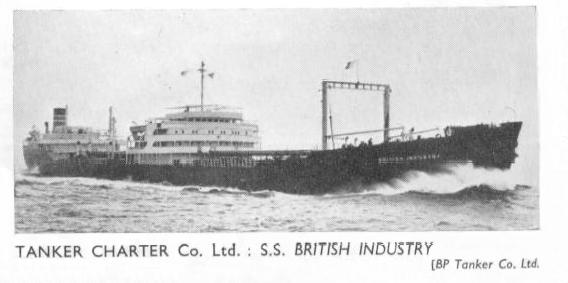


The vessel
was the first BP tanker to have goal posts instead of masts. The original
ships architect had passed away during her built John
Brown Glasgow. The new architect immediately made changes. Both flying bridges
reflect this. The aft flyingbridge is offset to starboard,
and the foreward flyingbridge although centred had a dog leg to starboard
it just before it joined the f orecastle where it would have accommodated
the foreward mast. She retained its top hat funnel. She was built to Admiralty
specification, and could at full speed do about 18 knots. Also installed was
a "De-gausing Loop" around the ship at tankdeck level, as a prevention
against magnetic mines. The master had a switch in his day cabin to cut the
supply to the main transmitter. A GBXZ message was sent by the Admiralty during
my stay onboard and the ship put through her Naval specification.
I Joined March 1958 at Falmouth as 2nd Radio Officer, doing my compulsory 6 months sea service under the supervision.
The vessel
traded Falmouth England - Banias Syria -Finnart Scotland. Then 3 voyages Finnart-Durban-minaalahmadi
Kuwait-Capetown
-IsleofGrain Kent England. I Signed off September 1958
The radio room starboard side behind the bridge, fitted with an IMR 81/83
MF/HF transmitter, Redifon R50M main receiver, IMR64
emergency reciver, IMR61 emergency transmitter. Redifon AL27 autoalarm, Marconi
lodestone D/F, IMR autokey, IMR Solas II lifeboat radio. In the chartroom
stood a Cossor radar transceiver with thedisplay on the bridge.